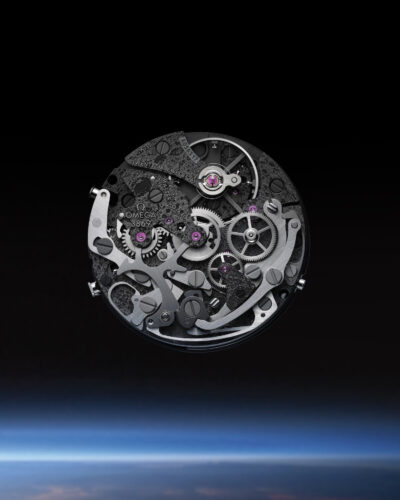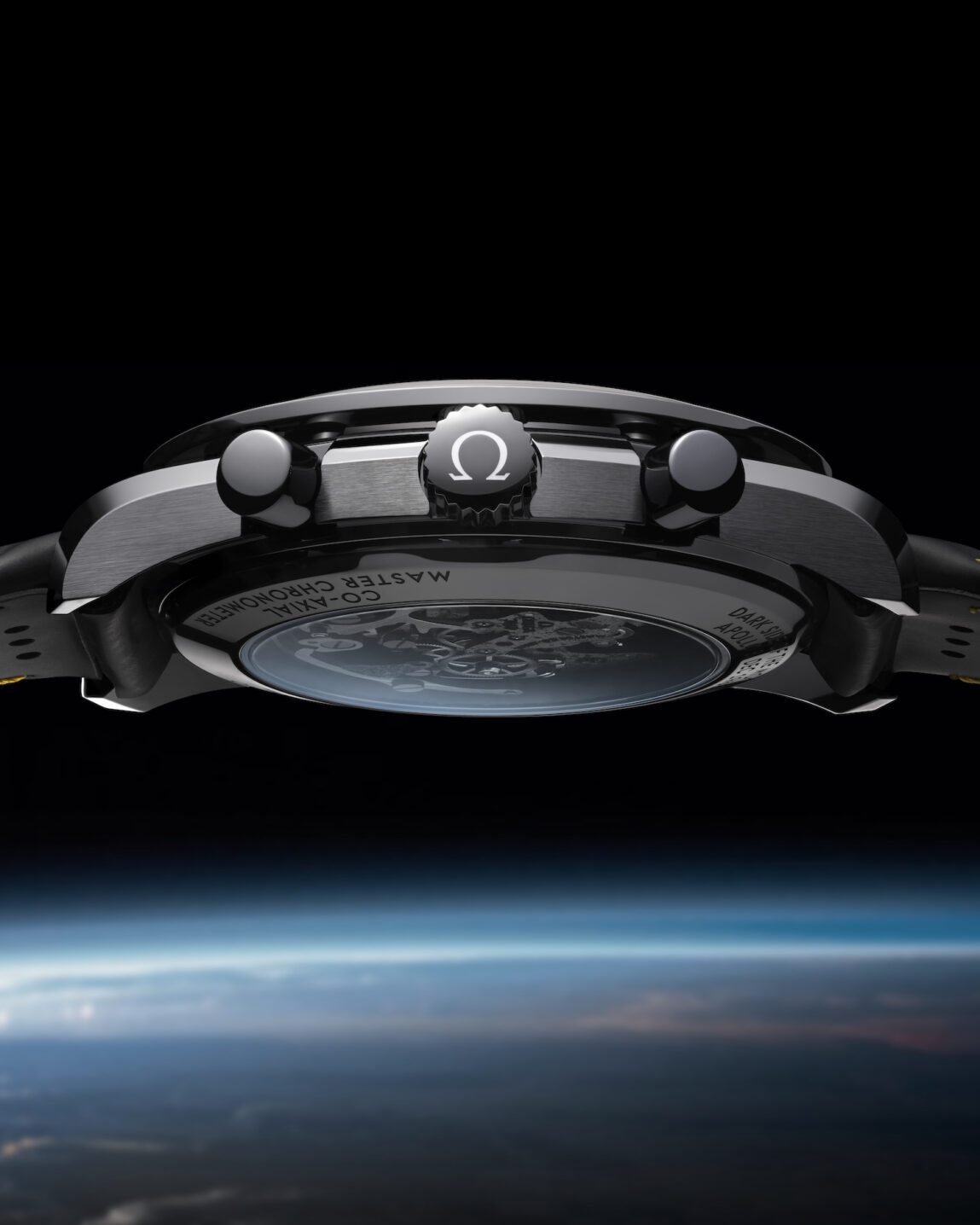OMEGA launched the first Speedmaster Dark Side of the Moon to mark the 50th anniversary of the Apollo 8 mission in 2018. This year, OMEGA is honoring the brand’s historically unique connection to space exploration with a new edition of this legendary model—crafted with the latest technologies and materials and featuring a variety of sophisticated design elements.
History was made in 1968: Apollo 8 made the first manned orbit around the moon. On board this pioneering mission, each astronaut was equipped with an OMEGA Speedmaster—an instrument that was relied upon throughout NASA’s lunar program.

Now OMEGA is once again focusing on the legendary Speedmaster, enhancing the Dark Side of the Moon model with even more exciting design details and sophistication. The caliber 3869, which drives the watch, has a unique decoration: The blackened main plate and the bridges have been laser-cut to depict the surface of the moon. Just like the moon, this movement also has two sides: The dial side shows the view of the moon from Earth, while the back of the watch reveals its dark side, which only astronauts get to see. In this new edition, the depiction of the moon has been recreated even more precisely thanks to laser engraving and contrasting surfaces, complemented by the light gray-coated wheels and the dark gray-coated gold balance.

The decorated movement can also be seen through the skeletonized dial made of black anodized aluminium. But the journey doesn’t end there: the 44.25mm case, polished bezel and caseback have been crafted by OMEGA from separate pieces of black ceramic, while the tachymeter scale is finished in gleaming white »Grand Feu« enamel. The central chronograph second hand is painted yellow—a color that is echoed by the watch’s perforated strap with black rubber and yellow lining.

The patent-pending small seconds hand at 9 o’clock is made of grade 5 titanium and has the shape of NASA’s famous Saturn V rocket. The striking 3D structure was created by laser turning, while white paint, ablation and laser blackening were used for the coloring. A small but impressive detail that pays tribute to the success of the Apollo program.


Various engravings are immortalized on the case back, including “WE’LL SEE YOU ON THE OTHER SIDE”—the last words that Jim Lovell, pilot of the command module, addressed to ground control shortly before the Apollo 8 mission disappeared for the first time on the other side of the moon without radio contact. [Red .]

